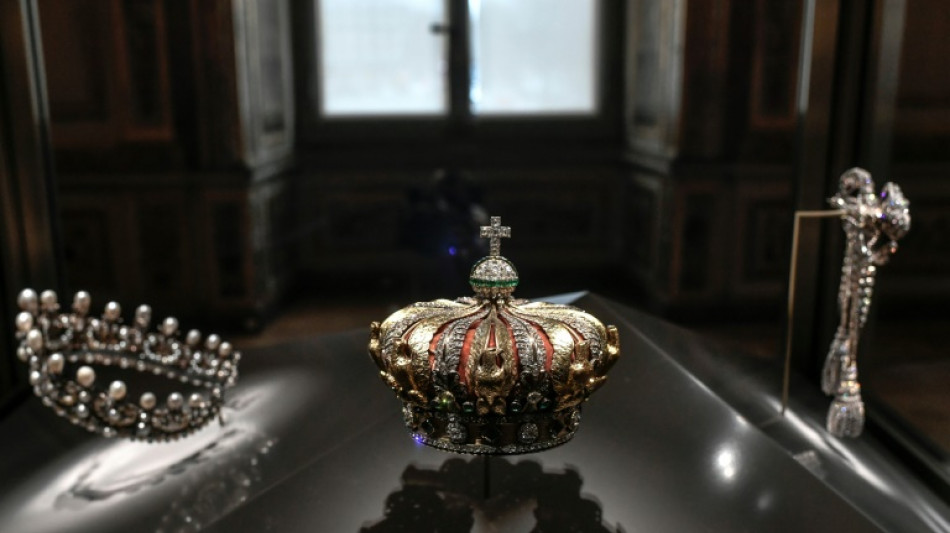

Louvre heist: five things to know about missing jewellery
Here are five things to know about the eight priceless pieces of jewellery stolen in an audacious heist from the Louvre Museum in Paris on Sunday.
- Illustrious -
The stolen pieces span two centuries of history and belonged to queens and empresses of France.
Empress Eugenie's tiara and crown were crafted by the renowned jeweller Alexandre-Gabriel Lemonnier shortly after her marriage to Napoleon III in 1853.
Both pieces were stolen, but the crown was abandoned by the thieves as they fled.
"This tiara is the one that she wore almost daily at court and that can be seen in her official portraits. She valued it greatly," Pierre Branda, a historian and scientific director of the Napoleon Foundation, told AFP.
Also snatched from the museum was a necklace and earrings sapphire set worn by Queen Marie Amelie, wife of Louis-Philippe, the French king from 1830 to 1848, and Queen Hortense, mother of Napoleon III.
Vincent Meylan, a historian specialising in jewellery, said Queen Hortense inherited the set from her mother, Empress Josephine, who was Napoleon I's first wife.
Some experts also claim that it originated from Queen Marie Antoinette.
"It really is a part of France's history," said Meylan.
A necklace and a pair of emerald earrings were also taken -- they were a wedding gift from Napoleon I to his second wife, Empress Marie Louise, and made by her official jeweller, Francois-Regnault Nitot.
- Exceptional -
Even without their illustrious owners, the piece deserved their place in the Louvre as they are "exceptional works of art", said Didier Rykner, editor-in-chief of the site La Tribune de l'Art.
Made by the great jewellers of the era, the jewels combine diamonds, pearls and precious stones to create spectacular compositions.
The so-called "reliquary" brooch of Empress Eugenie, mounted in 1855 by Paul-Alfred Bapst, is made up of 94 diamonds, including a rosette of seven diamonds around a central solitaire formed by two heart-shaped diamonds bequeathed to King Louis XIV by his chief minister Cardinal Mazarin.
Empress Eugenie's tiara features nearly 2,000 diamonds and more than 200 pearls. The sapphire necklace is made up of eight midnight blue precious stones and 631 diamonds, while the emerald necklace has 32 stones and 1,138 diamonds, according to the Louvre's website.
- Recent -
Despite their age, most of the jewels only became part of the Louvre collection in recent decades.
Of the eight stolen items, seven were acquired in the past four decades.
The emerald set was acquired in 2004 with the help of the Heritage Fund and the Society of Friends of the Louvre.
Marie Amelie's sapphire necklace was acquired in 1985, while Empress Eugenie's tiara and her large corsage bow were acquired in 1992 and 2008.
- Unsellable -
France's Ministry of Culture has said the jewels have a "priceless heritage value".
"They are invaluable in terms of heritage," said Rykner. "However their price can be assessed."
The items were sold relatively recently and their sales are documented, but the prices are not disclosed publicly.
"The correct term is unsellable," said Meylan. Reselling such catalogued and identifiable jewels in their current state would be impossible, he added.
- Unset -
As such, experts are warning that the historical pieces could be stripped down, with the stones and pearls unset and remounted to create other jewellery.
"If we don't find these jewels very quickly, they will disappear for sure," said Meylan.
"This is where treasure becomes priceless. We risk losing pieces of France's history."
K.Lang--MP



